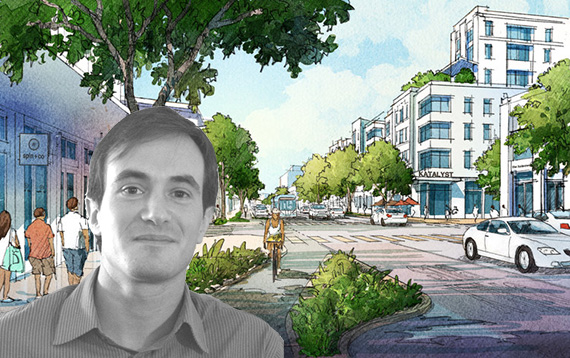Trending
North Beach master plan gets mixed response from the public

Almost a year in the making, Miami Beach residents are getting an in-depth look at a new master plan for North Beach – the part of the city that stretches from 63rd Street to 87th Terrace and between the Atlantic Ocean and Biscayne Bay.
The 189-page document was presented late Wednesday to a packed audience at the Byron Carlyle theater by urban planning firm Dover Kohl & Partners.
The plan calls for five big ideas to revitalize the area; the creation of a town center along 71st Street, more walkable streets – enhancing neighborhoods through the creation of local historic districts and local conservation districts, the creation of more parks and building to withstand the challenges of sea-level rise.
The plan got a largely positive response from audience members, but many expressed skepticism about proposals that would take away some traffic lanes to allow for enhanced bike and bus lanes, especially during rush hour times when much of the area is clogged with commuters.
Jason King, a project director and town planner at Dover Kohl who oversaw the creation of the master plan acknowledged the concerns. He told The Real Deal that North Beach residents need more transit options like shaded streets conducive to walking, buses and trolleys that come more frequently than they do now and safe bike lanes.
“We really have to shift away from the way we design the island,” King said. “We have to design the island so you can live here without a car and without driving everywhere. Otherwise we are heading to total gridlock.”
King expects the proposals for a town center to be adopted soon, and the city has already taken steps to approve height increases from 75 feet to 125 feet along 71st Street and parts of 72nd Street, as well as create a new overlay district for the Ocean Terrace historic district, where developer Sandor Scher could build a new 235-foot high condominium or a hotel along Ocean Terrace. The city has also taken steps to create a short-term rental district along Harding Avenue that supporters have said will allow many small, older MiMo buildings that are economically unviable to be preserved.
Several city commissioners at the Byron Carlyle said they liked what they saw. Commissioner Ricky Arriola said the plan “is one the best comprehensive plans I’ve seen.”
Acknowledging what will likely be a contentious debate over the creation of local historic and neighborhood conservation districts, commissioner Kristen Rosen Gonzalez said, “I don’t think anybody is 100 percent happy with this but that’s the beauty – this document is a compromise. Everybody had to give and take a little bit – development and preservation.”
The plan’s call for the creation of local historic districts, which would prevent most demolitions of buildings, got strong support from preservationists like Kirk Paskal, a longtime resident who said he still would like to see more protections enacted. “What the plan proposes is in and of itself a compromise between local historic districts and neighborhood conservation districts, which still leave significant areas and significant structures vulnerable. But then again you try and start somewhere and make inroads in the right district.”
The creation of local historic districts is opposed by some developers. Matis Cohen, who owns a number of aging MiMo buildings in the area, said that with sea-level rise, many of the older buildings in North Beach will be uninsurable and eventually uninhabitable. He said there is a real potential that buildings will be uninsurable in the “next couple of years,” and the creation of local historic districts takes fundamental rights away from property owners.
“Everybody who bought properties in North Beach bought them under the impression they would be able to knock them down because there is no specific protection for those buildings – and now you are going to take that away. You are taking away a civil right,” he said, adding that it’s not clear whether many of the older buildings will be sustainable even if they are protected.
But King said that creating a local historic district doesn’t mean that demolitions won’t occur. Noncontributing buildings or structures that pose public health issues are demolished in other historic districts across Miami Beach, he said, and creating local historic districts is simply about “protecting the gems in North Beach.”
The Miami Beach City Commission is scheduled to approve the plan at its Oct. 19 meeting, but all of its various provisions will require separate approvals before they become law. Jeff Oris, the city’s economic development director, told TRD the plan is really about “how to move North Beach into the next 20 or 30 years,” calling it “a roadmap for investment in North Beach.”




